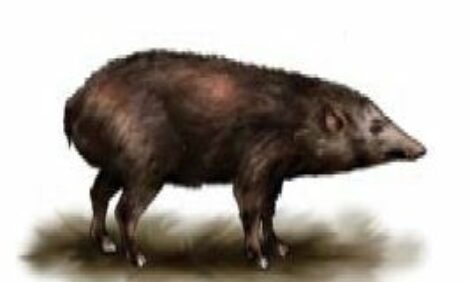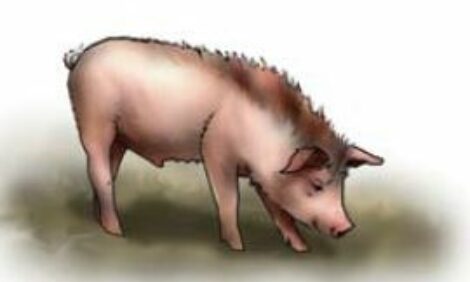



Meishan
The Meishan is a breed of domestic pig named for the Chinese prefecture of Meishan. It is a sub-group of the Taihu pig, and is a small to medium-sized breed with large drooping ears, and wrinkled black skin, particularly so on the face. The breeds imported from China are slow growing and fat, but have a very good taste. They are resistant to some diseases when compared to many other domesticated breeds, and are able to consume large amounts of roughage.
Native to Southern China, the breed is best known for its large litters of 15-16 piglets. Due to its fecundity, it was imported to the United States in the late 1980s by the USDA Agricultural Research Service, this effort also imported Fengjing and Minzhu pigs from China. A total of 144 pigs from these three breeds were shipped to the United States. Iowa State University, for example, received 22 Meishan females and 10 Meishan boars from this shipment on July 27, 1989. Unfortunately, however, the Meishan has not found much use in farms as a result of its slower growth rates and abundance of fat. On the other hand, it reaches maturity very early, with both boars and sows carry traits that make them one of the most prolific breeds in the world.
Sows grow to be about 57.8cm high, 100cm around the chest, and 61.6kg in weight. They have a backfat thickness of 2.5 cm and a dressing percentage of 66.8%. As mentioned above, Meishan pigs are perhaps one of the most prolific breeds of pig in the world. They reach puberty at 2.5-3 months of age, achieve high embryo survival rates, and a large litter size of 15-16 pigs. It is quite common to have two litters per year. Third and later parities of this breed had 17.0 pigs born, with 12.9 being weaned on average. Their 240-day weight was 170.5lbs.
Image courtesy of the FAO's Farmer's Hand Book on Pig Production








